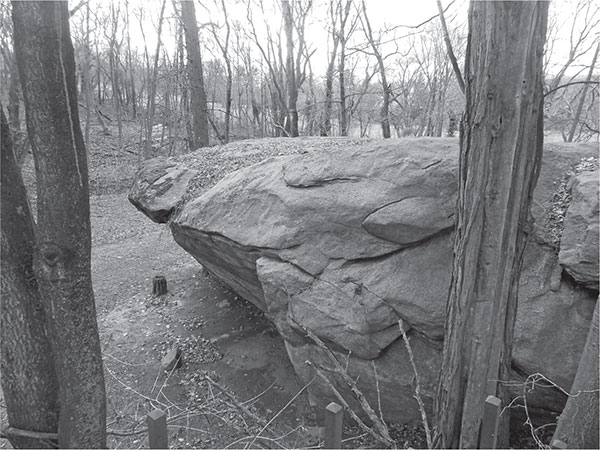Richard Panchyk - Hidden History of Long Island
Here you can read online Richard Panchyk - Hidden History of Long Island full text of the book (entire story) in english for free. Download pdf and epub, get meaning, cover and reviews about this ebook. year: 2016, publisher: Arcadia Publishing, genre: Non-fiction. Description of the work, (preface) as well as reviews are available. Best literature library LitArk.com created for fans of good reading and offers a wide selection of genres:
Romance novel
Science fiction
Adventure
Detective
Science
History
Home and family
Prose
Art
Politics
Computer
Non-fiction
Religion
Business
Children
Humor
Choose a favorite category and find really read worthwhile books. Enjoy immersion in the world of imagination, feel the emotions of the characters or learn something new for yourself, make an fascinating discovery.
- Book:Hidden History of Long Island
- Author:
- Publisher:Arcadia Publishing
- Genre:
- Year:2016
- Rating:5 / 5
- Favourites:Add to favourites
- Your mark:
- 100
- 1
- 2
- 3
- 4
- 5
Hidden History of Long Island: summary, description and annotation
We offer to read an annotation, description, summary or preface (depends on what the author of the book "Hidden History of Long Island" wrote himself). If you haven't found the necessary information about the book — write in the comments, we will try to find it.
Hidden History of Long Island — read online for free the complete book (whole text) full work
Below is the text of the book, divided by pages. System saving the place of the last page read, allows you to conveniently read the book "Hidden History of Long Island" online for free, without having to search again every time where you left off. Put a bookmark, and you can go to the page where you finished reading at any time.
Font size:
Interval:
Bookmark:



Published by The History Press
Charleston, SC
www.historypress.net
Copyright 2016 by Richard Panchyk
All rights reserved
Front cover: Library of Congress.
First published 2016
e-book edition 2016
ISBN 978.1.43965.898.7
Library of Congress Control Number: 2016953389
print edition ISBN 978.1.46713.627.3
Notice: The information in this book is true and complete to the best of our knowledge. It is offered without guarantee on the part of the author or The History Press. The author and The History Press disclaim all liability in connection with the use of this book.
All rights reserved. No part of this book may be reproduced or transmitted in any form whatsoever without prior written permission from the publisher except in the case of brief quotations embodied in critical articles and reviews.
To Elizabeth, the perfect walking companion on my hidden history adventures.
INTRODUCTION
Hidden History of Long Island weaves together a colorful historical tapestry from the scattered remnants of Long Islands past. Each strip of fabric tells a unique part of the story of Long Islands rich and fascinating existence. Inside this book youll encounter ancient cemeteries, long-forgotten places and eerie, mysterious spaces. Explore further and youll discover tales of abandoned mansion ruins, lost pirate treasure and record-setting aviators. Youll be treated to a glimpse into the eccentric minds of some of Long Islands most influential residents.
It was a misty, leaf-strewn autumn day just after Id started to write Hidden History of Long Island, and I found myself standing on a well-preserved section of the old Long Island Motor Parkway in Alley Pond Park, looking to the east. Little did I know it then, but this vintage roadway, begun in 1908 and abandoned in 1938, was to be my companion as I wrote the book. In the course of many other adventures over the months that followed, I would visit the parkways various remnants on numerous occasions.
The Motor Parkway, the worlds first limited-access concrete highway, was not only itself a fascinating piece of hidden history, it was my constant reminder of what this book is abouta ghostly path connecting so much of Long Islands vanished past. The highways remnants exist in small fragments scattered across what was once its forty-three-mile path across central Long Island. Seeking out its remains inspired me to search for other forgotten places and momentsand find them I did.
Chapter 1
THE GLACIER STOPS HERE!
The first important event in Long Islands history happened around twenty thousand years ago, long before any humans set foot there. It was a time in geological history known as the Wisconsin Glaciation, the so-called Ice Age. Glaciers had advanced from the north, covering all of Canada and parts of at least twenty-four states with ice. Geographically, Long Island is a very special place, because it marks the southernmost point of glacial advancement. As the glaciers advanced, they accumulated boulders, rocks and earth and pushed this debris along. The point where they stopped advancing and began to melt is known as the terminal moraine, and Long Island has two of them, formed at different times: the younger Harbor Hill Moraine, skirting along the northern coast of Long Island; and the Ronkonkoma Moraine, running almost parallel but farther south.
The locations of these terminal moraines are marked by the islands lines of hills, including Suffolk Countys highest point, the 401-foot-high Jaynes Hill (also known as High Hill, part of the Ronkonkoma Moraine) in Melville, and Nassaus highest point, Harbor Hill in Roslyn, at 348 feet (part of the Harbor Hill Moraine).
But creating Long Islands hills was not the only effect of the glaciers. As the ice melted, streams of runoff water flowed south toward the Atlantic, bringing tons of fine sediment with it and forming a flat outwash plain, comprising most of southern Long Island and accounting for the existence of the Hempstead Plains and the southern beaches.

Looking north from south of Melville toward the Ronkonkoma Moraine and High Hill (aka Jaynes Hill), 1917. United States Geological Survey.
When chunks of the front of the glaciers broke off, they formed depressions, what are known as kettle holes. Many of these filled with water and became kettle lakes or ponds. Many such water bodies are scattered across Long Island, the largest being Lake Ronkonkoma, three-fourths of a mile in diameter, and the seventy-five-foot-deep Lake Success in the Nassau County village of the same name.
In this chapter and throughout the book, well find out how the Ice Ages impact on Long Islands geography affected its development and allowed for some fascinating moments in history.
SHELTER ROCK
During the last Ice Age, sometime between ten thousand and twenty thousand years ago, an advancing glacierlets call it Derekencountered a gigantic granite boulder in what is now Westchester County. Though the boulder was large, Derek was much larger, and as he moved, he carried the boulder along with him several miles to the southeast, depositing it in what would become the town of North Hills, on Nassau Countys North Shore. Now, glaciers moving boulders was a frequent Ice Age occurrence, but this boulder is quite special. Known as Shelter Rock and marked by a sign, it is the largest boulder on Long Island and possibly the largest in New York State. At five million pounds (eighteen hundred tons), the so-called glacial erratic measures fifty-five feet high by forty feet wide by sixteen feet deep and is located a mere forty feet off the southbound side of Shelter Rock Road, just south of Northern Boulevard (Route 25A). The new arrival was likely already five hundred million years old when Derek the Glacier brought this large metamorphic present to Long Island.
Despite its importance, not many people are aware of its existence. First, the sheer size of this boulder is hidden from sight because it lies in a valley twenty feet below the road. Second, it is on private property behind a fence, hidden by shrubs and trees.
The rock, also known as Milestone Rock and Manhasset Rock, got the name Shelter Rock due to its generous thirty-foot by twelve-foot overhang, which offers space enough for several people to receive shelter from wind and rain. But was there any proof that it was used for that purpose? An archaeological excavation for the American Museum of Natural History in 1946 found evidence of Native American presence dating to 1000 BC, making it one of the oldest human habitation sites ever found on Long Island. The site yielded twenty-seven projectile points, pieces of stone knife blades, pottery sherds, shell and animal bone fragments and several hammer stones used by the Matinecocks, who belonged to the Algonquin tribe.

Shelter Rock. Authors collection.
There are a few legends associated with Shelter Rock. One of them tells of a young soldier running off with an Indian maiden, but he was shot with arrows before he could reach the overhang. Shelter Rock was also rumored to be the site of Captain Kidds buried treasure. According to lore, the pirate lifted the giant boulder and dug a hole under the rock, depositing some of his booty there.
Next pageFont size:
Interval:
Bookmark:
Similar books «Hidden History of Long Island»
Look at similar books to Hidden History of Long Island. We have selected literature similar in name and meaning in the hope of providing readers with more options to find new, interesting, not yet read works.
Discussion, reviews of the book Hidden History of Long Island and just readers' own opinions. Leave your comments, write what you think about the work, its meaning or the main characters. Specify what exactly you liked and what you didn't like, and why you think so.













